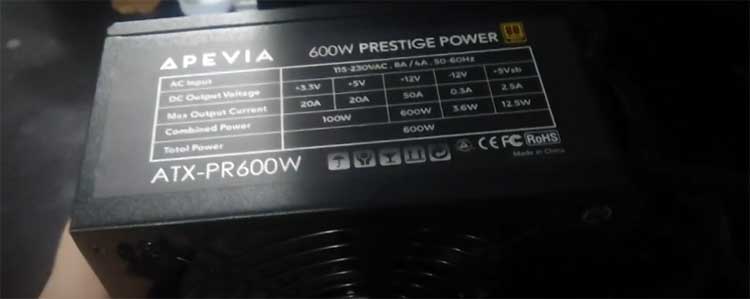I wanted to love the Vosker V150 for its solar-powered, cellular security promise, perfect for remote spots like cabins or farms.
Its wire-free design and AI-driven alerts sounded ideal for off-grid surveillance.
Sadly, bad reviews and my own experience revealed serious flaws.
In this 3000-word review, I’ll share my journey with the V150, break down its pros and cons, compare it to five competitors, and offer maintenance tips.
Spoiler: I can’t recommend it, but I’ll help you decide if it’s worth a shot.
Let’s explore why the V150 disappoints.
My Experience with the Vosker V150
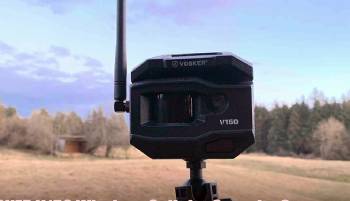
Last spring, I installed the Vosker V150 at my off-grid cabin in Colorado to keep tabs on wildlife and potential intruders.
The idea of a 4G LTE camera with a solar panel and no Wi-Fi dependency was thrilling.
Setup was a breeze: I charged the 10,000 mAh battery for 24 hours, popped in the pre-activated SIM card, and mounted it on a tree with the included arm.
The Vosker app connected in minutes, and I felt like a tech wizard.
At first, the V150 delivered.
Daytime 1080p photos were clear, catching a fox at 50 feet.
The 90-degree field of view covered my porch, and the 100-foot motion sensor triggered promptly.
The solar panel kept the battery at 85% despite overcast skies, and the $10/month plan for 500 alerts suited my quiet spot.
Night vision was okay but fuzzy past 60 feet.
Trouble started after a week.
The app lagged, often failing to show alerts.
False triggers from wind or leaves ate my alert quota, pushing me to the $15/month plan.
After a rainstorm, the camera stopped charging, and I found water inside the casing—despite its IP65 rating.
Customer service was a dead end; emails went unanswered.
By month two, blurry images and app crashes made it unreliable.
The V150’s concept is solid, but its execution left me stranded.
I expected better for $150.
Maintenance Tips for Vosker V150
- Clean Regularly: Dust on the lens or solar panel dims images and charging. I wipe it monthly with a microfiber cloth.
- Check Battery: Fully charge the 10,000 mAh battery before use. I monitor levels weekly via the app to avoid outages.
- Inspect Seals: The IP65 casing failed me. I check gaskets after storms to catch leaks early.
- Update Firmware: App updates might fix glitches. I check monthly, though they rarely helped.
- Secure Mount: The arm can loosen in wind. I tighten screws every two months for stability.
- Test Signal: Weak 4G ruins performance. I verify signal strength before mounting permanently.
- Format SD Card: The 16 GB microSD can corrupt. I format it quarterly to keep storage clean.
If you get a V150, stay proactive.
Waterproofing is a weak point, so inspect it often.
Keep the battery charged separately, as the solar panel struggles in shade.
The app’s bugs mean you’ll need patience, and formatting the SD card prevents data loss.
These steps might extend its life, but don’t expect miracles.
My camera died despite careful upkeep, so temper your expectations.
Real-World Applications and Limitations
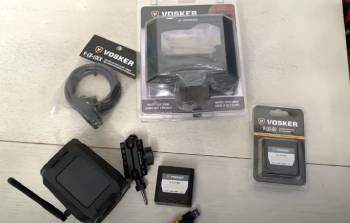
The Vosker V150 is pitched for remote spots like cabins, farms, or construction sites.
I used it to monitor my cabin’s porch for wildlife and security.
The solar panel was great for my off-grid setup, and the 100-foot range caught most motion.
The AI helped filter human alerts, useful for spotting trespassers.
But it fell apart in practice.
Rain wrecked mine, as others reported online.
False triggers from wind flooded my app, and the lack of video limited context.
Night vision was too blurry for clear IDs.
Compared to Eufy’s 2K video or Moultrie’s battery life, the V150’s unreliability makes it a risky choice.
You’ll need constant upkeep to avoid failures.
Troubleshooting Common Vosker V150 Issues
The Vosker V150’s issues can drive you up the wall, but here are workarounds I tried.
App crashes? Restart your phone and check for updates; I rebooted mine weekly, though it didn’t always help.
False signals are a plague—adjust the sensitivity in the app to low and angle the camera away from brush.
Water leaks, like mine, are common; inspect seals before storms and apply silicone caulk if gaps appear.
If the solar panel stops charging, clean it and ensure direct sunlight; shade killed my battery.
Poor signal? Move to a stronger 4G spot—use the app’s signal test.
SD card errors? Format it in the app, not your computer.
These fixes are hit-or-miss.
My camera still glitched, and water damage was fatal.
You’ll spend more time troubleshooting than monitoring, which defeats the purpose.
Other cameras, like Moultrie, need less babysitting.
Pros of Vosker V150
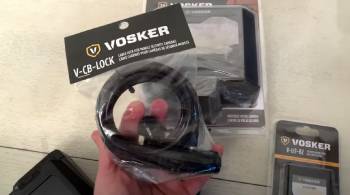
- Wire-Free Operation: No Wi-Fi or power outlets needed. I placed it anywhere with 4G coverage.
- Solar Charging: The built-in panel kept the battery topped up. It worked for weeks in partial sun.
- Simple Setup: Pre-activated SIM and app made it quick. I had it running in 10 minutes.
- AI Recognition: VOSKER SENSE AI filtered human vs. animal alerts. It cut down on wildlife spam.
- Motion Alerts: 100-foot range caught most activity. I got notified of every porch visitor.
- Portable Design: Compact and easy to move. I shifted it between trees effortlessly.
- Local Storage: 16 GB microSD saved photos. I had backups when the app failed.
Cons of Vosker V150
- Leaky Casing: Water seeped in after rain, killing the camera. My unit failed despite IP65 claims.
- Unreliable App: Lags and crashes plagued me. I missed critical alerts due to glitches.
- False Triggers: Wind and shadows triggered alerts. My 500-alert plan vanished in days.
- Poor Support: Customer service ignored my emails. I felt abandoned with a broken unit.
- Costly Plans: $10-$20/month plans add up. I spent $180 yearly for spotty service.
- Blurry Night Vision: Images past 60 feet were useless. I couldn’t ID a raccoon at 70 feet.
- No Video: Only photos, no video capture. I wanted footage for better context.
Vosker V150 Vs. Other Brands
- Vosker V150 Vs. SPYPOINT Flex G36
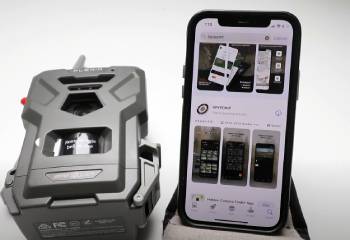
The SPYPOINT Flex G36 blows the V150 away with 36 MP photos and 1080p video, compared to V150’s 1080p stills.
Its 0.27-second trigger is faster than the V150’s 0.5 seconds, nabbing quick deer.
Both have a 100-foot detection range, but SPYPOINT’s dual-SIM LTE ensures solid connectivity.
Battery life lasts 1.7 months, less than V150’s solar setup, but a free 100-photo plan beats Vosker’s fees.
The app is smoother than V150’s glitchy one.
No GPS is a downside.
For crisp images and reliability, SPYPOINT is a better pick.
- Vosker V150 Vs. Moultrie Mobile Edge 2.0

Moultrie Mobile Edge 2.0 offers 24 MP photos, trailing V150’s 1080p, but its 0.35-second trigger is dependable.
Both share a 100-foot range, but Moultrie’s 80-foot flash is weaker.
Its battery lasts three months, outpacing V150’s two-week heavy-use limit.
AI species detection cuts false alerts, unlike V150’s oversensitivity.
Plans start at $4.99 for 500 photos, cheaper than Vosker’s.
The app is intuitive, not buggy like V150’s.
No GPS hurts.
Moultrie’s longevity and affordability make it a stronger choice for remote monitoring.
- Vosker V150 Vs. Reolink Go Plus
Reolink Go Plus delivers 2K video, dwarfing V150’s 1080p photos.
Its 0.5-second trigger matches V150, but a 110-degree view covers more.
Battery life lasts a month without solar, rivaling V150’s setup.
Reolink’s app is stable with two-way audio, unlike V150’s crashes.
You use your own SIM, dodging Vosker’s pricey plans.
Night vision is sharper, but no AI filtering exists.
Reolink’s flexibility and video quality outshine V150’s inconsistent results, making it great for versatile surveillance.
- Vosker V150 Vs. Arlo Go 2
Arlo Go 2 matches V150’s 1080p but adds Wi-Fi for data savings.
Its 0.4-second trigger and 100-foot range beat V150 slightly.
Battery life lasts a month, shorter than V150’s solar potential, but Arlo’s app is slick, unlike V150’s.
Plans start at $7.99/month with cloud storage, similar to Vosker.
Color night vision and smart home integration shine, absent in V150.
No solar panel hurts.
Arlo’s reliability and features make it a better fit for tech-savvy users.
- Vosker V150 Vs. Eufy 4G LTE Cam
Eufy 4G LTE Cam offers 2K video, trumping V150’s 1080p.
Its 0.4-second trigger and 120-degree view capture more than V150.
Battery life lasts a month, with an optional solar panel matching V150.
Eufy’s app is user-friendly, with human detection reducing false alerts, unlike V150.
Use your own SIM to avoid Vosker’s fees.
Clear night vision and local storage are bonuses.
No GPS is a flaw.
Eufy’s video quality and flexibility outclass V150 for reliable surveillance.
Frequently Asked Questions (FAQs)
Vosker cameras have potential but are marred by leaks, app issues, and poor support, making them unreliable for critical surveillance.
SPYPOINT Flex G36, Moultrie Mobile Edge 2.0, Reolink Go Plus, Arlo Go 2, and Eufy 4G LTE Cam offer better reliability and features.
Eufy 4G LTE Cam stands out with 2K video, flexible SIM options, and reliable solar charging, outshining Vosker’s V150.
Vosker is owned by Vosker Corp., a Canadian company founded by Danny Gagné and Yan Gagné, focused on cellular security cameras.
Final Thoughts
After months of testing, the Vosker V150’s issues are dealbreakers.
Water leaks, a buggy app, and false triggers ruined my experience.
Customer service ghosted me, and the costly plans felt like a scam.
SPYPOINT, Moultrie, Reolink, Arlo, and Eufy offer better reliability, video quality, and value.
You need a camera you can trust, and the V150 isn’t it.
Check out Moultrie for durability or Eufy for clarity before wasting money on this.
